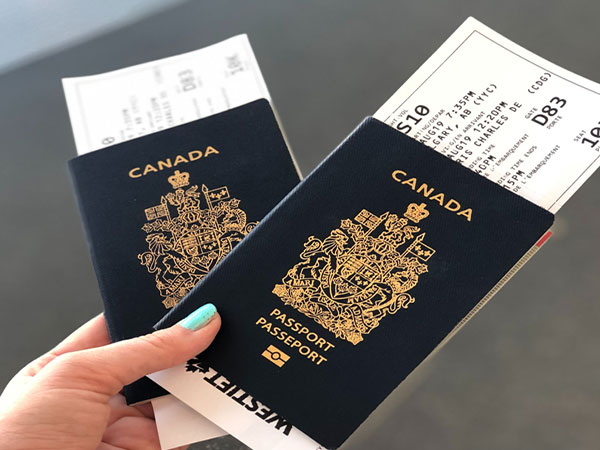Canada has been a preferred destination for higher education, attracting numerous prospective international students. Many Canadian universities rank high globally, and a recent educational strategy outlined by the Canadian Ministry of Education emphasizes the goal of welcoming bright students to the country. There has been a considerable change in who Canada now wants to welcome as international students as the government has studied data over the last decade and implemented strategies to ensure each student is accounted for their housing, healthcare, study environment etc. adequately as per its high standards. This adjusting approach signifies that students from any corner of the world are highly encouraged to choose Canada for their education, contributing to its growing popularity.


Benefits of studying in Canada
Every year, Canada welcomes hundreds of thousands of international students from around the globe. When you study in Canada, you invest in your future. Discover the top reasons why you should choose Canada as your international study destination!
Acquire a world-class education and take part in leading R&D – Canada’s top-quality schools offer thousands of programs in all fields of study. At Canadian colleges and universities, you will learn from world experts in science, technology and innovation.
Thrive in a safe, peaceful and inclusive society – Canada is one of the safest countries in the world. It is also a young country that celebrates diversity. As an international student, you will feel welcome in a happy and peaceful nation.
Opportunities to earn while you learn – Canadian study permits may allow you to work during your studies. There are also many scholarships available to international students. Canada’s colleges and universities offer thousands of co-op programs, work placements and internships that enable you to earn money and gain practical experience.
Embrace diversity – Canada stands out as one of the most ethnically and linguistically diverse countries globally, with more than half of its population not having English as their first language.
How to Study in Canada
- Research Programs: Explore Canadian institutions, and choose a program aligned together with your desires.
- Check Admission Requirements: Review academic and language talent requirements for your chosen program.
- Language Proficiency Test: Take IELTS, PTE or TOEFL and gain the specified scores for English proficiency.
- Get professional assistance: Seeking professional help and guidance can make the process smoother and more successful. Connect with Agastya Global to initiate the process and we will guide you on this exciting journey.
- Apply to Institutions: Submit online applications to selected universities or colleges.
- Receive Letter of Acceptance: Upon acceptance, acquire a Letter of Acceptance (LOA) from the University. You will also need a provincial attestation letter (PAL) or territorial attestation letter (TAL) to apply for a study permit.
- Pay Living expense: GIC which stands for “Guaranteed Investment Certificate” is a short-term liquid investment (usually for up to a year) offered by Canadian Banks. As per Immigration, Refugees and Citizenship Canada (IRCC), students opting to study in Canadian Designated Learning Institutes, may invest CAD 20,635 in the form of GIC with authorised Canadian Banks. This can help have positive impact in the visa application.
- Pay Tuition Fee: It is advisable to pay the first year’s tuition fees in full.
- Health Check-up: Appear for medical test at designated hospitals and doctors in your state/city.
- Apply for Study Permit: Apply for a Canadian study permit through Refugees and Citizenship Canada (IRCC).
- Arrange Finances: Plan and secure a budget for transportation, accommodation, and living expenses.
- Orientation and Settlement: Attend orientation sessions, get familiar with the surroundings, and settle into accommodation upon arrival.

Intakes available for Canada Student Visa
As one of the most popular study abroad destinations, Canadian universities provide three admission intakes. These intakes are short time periods throughout the year when applications are accepted, processed and streamlined for a pool of courses offered at Canadian universities. Choosing the right session will allow you to timely plan your standardized tests, submit applications and apply for a Canadian study permit.
| Type of Intake | Starts from |
| Fall/September Intake | September – December/early January |
| Winter/January Intake | January – May |
| Summer/Spring/May Intake | May – August |
Steps for Canada Student Visa
In order to get a study permit, students must apply though the regulated body that is IRCC – Immigration, Refugees and Citizenship Canada
- First acquire the Letter of Acceptance from the designated learning institution (DLI) you’ll be attending (One must also have proof of GIC payment of CAD 20,635)
- You will need a provincial attestation letter (PAL) or territorial attestation letter (TAL) to apply for a study permit.
- Make an online application to IRCC
- Upload the scanned copies of your academic and personal documents.
- Pay the application fee by using an online payment method. Keep in mind, CAD 150 for Study Permit application fee and CAD 85 for the biometrics fee.
- You need to provide your photo and fingerprint for biometrics. This step will start after paying the biometrics fee.
- After background verification, you’ll receive an Electronic Travel Authorization (eTA) for entry into Canada as an international student.

